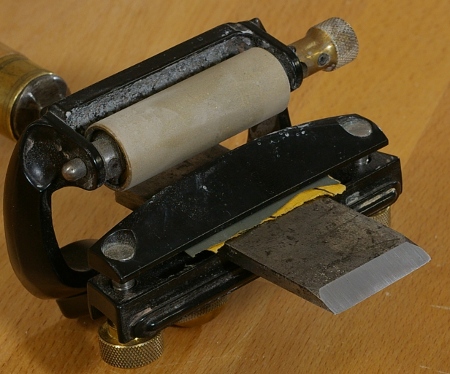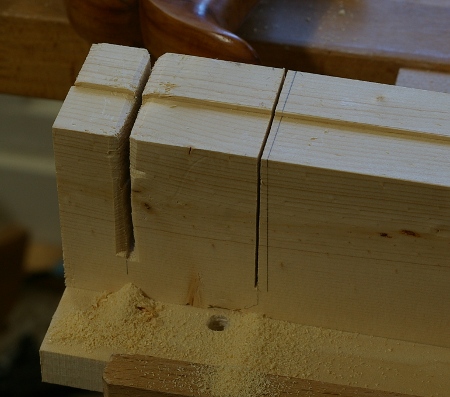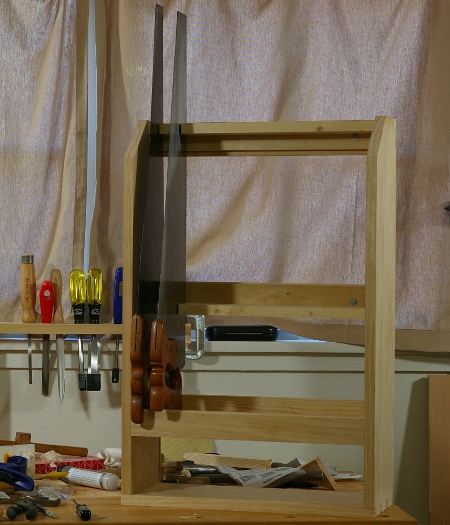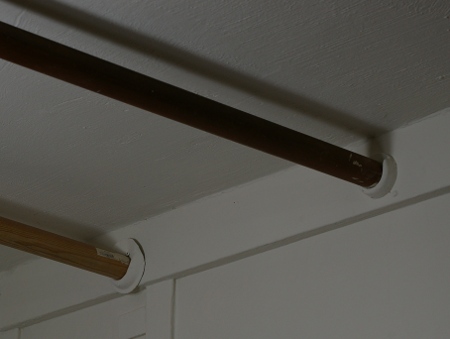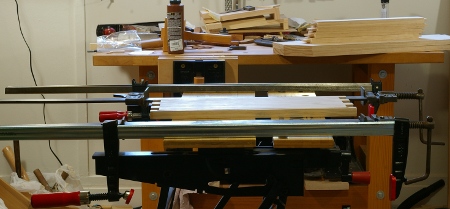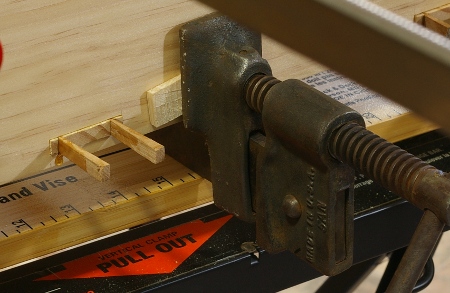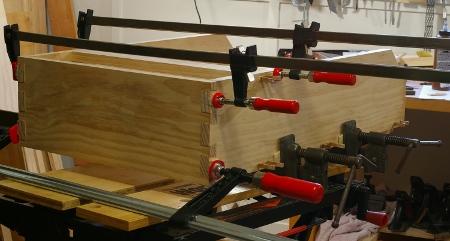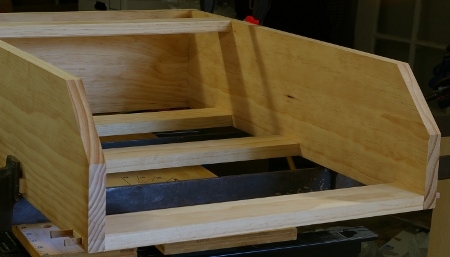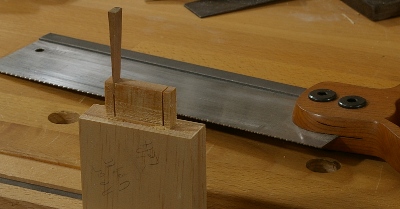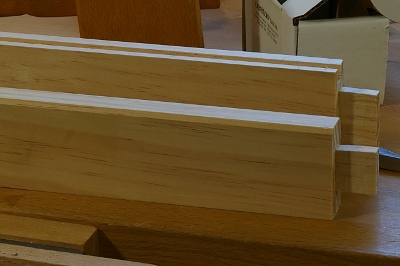After looking at lots of frame saws that a lot of other galoots have made (not mentioning any names here, Mssr. Isola), I decided to make my own for resawing. Well, I had decided to make my own a long time ago, but never got around to it until now. About a year ago, I ordered the blade (a Wilhelm Putsch blade, about 5 teeth per inch), and set aside a piece of beech. Then I proceeded to do nothing else on the project until last week.
After cutting the pieces out and milling them to size, I cut the joinery. There have been many styles for the frame joints, but most people do mortise-and-tenon joints that aren’t glued (the blade tension keeps the saw together), so I did, too. I decided to make the joints haunched, because in theory, that kind of joint resists twisting better than a plain blind joint. Also, I’ve never made one, so I figure I’d better get down to the business of screwing them up.
And I screw up I did, slightly, on the first two. On the first one, I blew out the side of the mortise when chopping it (it was too close to the end, 1/4″). Nothing a little glue won’t fix. On the next one, I cut the tenon too loose, which doesn’t matter on a joint that I’m not going to glue, but still.
The next two came out perfectly, though:

Then it was time to make the hardware to hold the blade. I didn’t deviate from the way others have done it. I used a 5/16″ carriage bolt for one side (bottom in the picture) and a section of threaded rod (top in the pic) for the other:

The steps I took were as follows:
- Filed the threads flat and four-square at the end.
- Drilled the hole that will hold the blade-holding pin with a Millers Falls #5 eggbeater.
- Cut the blade slot with a Bahco junior hacksaw (slowly, to keep the hacksaw blade from wandering around). The kerf is almost a perfect match for the blade.
- Cleaned up the areas around the slot with a small tapered file.
- Cleaned up the slot with some folded sandpaper in the kerf.
- Cleaned up the tip.
- Discovered that the little bolts that I was using to pin the blade were a little too short for the little nut to fit.
- Filed recesses around the hole in the big bolt so that the little nut could reach the little bolt.
- Cleaned up the tip again.
One little tip when you’re filing any kind of thread: Keep a nut on the inside of the filing area. After each stage of filing, take off the nut and put it back on again. This cleans up the threads, although for this project, it doesn’t really matter for the carriage bolt side.
The saw is functional now (I’ve done a test cut), but I’m not quite finished yet. I’m currently waxing the blade and I also need to shape handles into the ends.
[Edit: I have ditched the wingnut in favor of a regular hex nut tensioned with a wrench. The wingnut does not provide enough tension.]

